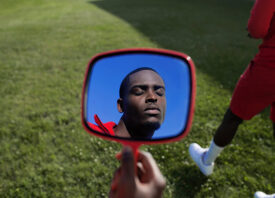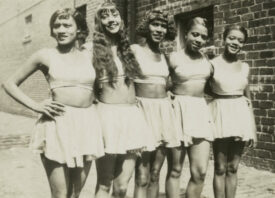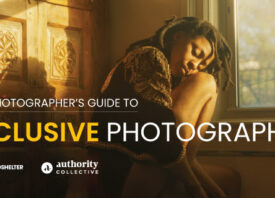Search this site
What Is An Inclusive Modeling Agency?

“Revolt was one of the very first ‘new generation’ agencies,” Sophia Maslin , the founder and CEO of Revolt Model Agency tells me. She and her sister Miriam created the inclusive modeling agency in 2017 to champion eclectic, unique individuals. Unlike “mainstream” modeling agencies, they’re championing personality, diversity, and individual self-expression.
“To be inclusive is to be without judgment,” Maslin says. “It is to not look down at someone’s height; it’s to not look down at their disability. It is to focus on beauty that is not just visible; it is to appreciate people’s unique attributes and see them as strengths as opposed to weaknesses.”
Revolt models are eclectic and one-of-a-kind by definition, but if they all share one thing, it’s a passion and interest outside of modeling. Many did not identify as “models” before being scouted by Revolt. “We have creative directors, actors, dancers, athletes, musicians, and art curators,” Maslin explains. “We look for all talents, to be honest. No talent is too obscure. We just love interesting people.”
We asked her to tell us more about the modeling industry and the role photographers can play in building a more inclusive future.

You started Revolt as an inclusive modeling agency in 2017. How has the industry evolved since then, and what still needs to be done?
“It has become more inclusive and progressive in terms of model casting, but there is still a long way to go. Unfortunately, the industry can be very cyclical, and there is also an issue of tokenization: some brands want a token ‘curve’ model or one model with a skin condition, and whilst this may seem inclusive on the surface, the token aspect means it lacks real authenticity.”
What role do you see photographers playing in this shifting industry?
“I think I’d say to be open to using models that you may not normally use, and just be as creative and authentic as possible.”
What has been your proudest moment in the last six years?
“ELLE did a big editorial piece on us as an agency, which was a huge milestone for us. We have worked on some really cool campaigns. We did Perfect by Marc Jacobs, which was a powerful campaign for inclusivity, and we have also had Vogue covers, which have all been amazing. In other sectors, we have also cast models in super cool music videos for ASAP Rocky, Stormzy, Rita Ora, and Sam Smith. We are super proud of everything we have done, to be honest.”


Can you share any behind-the-scenes stories about your work on a campaign that was particularly memorable?
“When we did our TMRW Magazine Editorial a while back. We had almost 20 of our models on set, and the whole Revolt team was there, which meant the atmosphere and sense of community was unparalleled that day.”

You’re scouting new models now. What are you looking for?
“Models who have depth to them—who are looking to do more with their life than just model. Everyone on our books has a talent or interest outside of modeling, and I think that’s a core value of ours: we look for real people and not just ‘mannequins.’”
As the CEO of an inclusive modeling agency, are you seeing any trends these days in terms of what big brands and publishers are looking for?
“They are looking more for those who have talents or do things outside of modeling, which fits with Revolt well, as everyone on our board has this.”
What role do photographers play in the day-to-day operations of your agency?
“We use photographers to take digitals and test shoot our new faces or faces that need development. Without this, clients are way less likely to book the models for jobs, as a developed portfolio is such an integral part of being able to see what that model could do for your shoot.”
What do you look for in the photographers you choose to collaborate with?
“We like diverse portfolios not only in the style but also in the models shot.”
What is the best way for a photographer to reach out and start building relationships with modeling agencies? Any dos and don’ts you can share?
“I think just send in a short email introducing who you are, then a few of your best images and a link to your main portfolio. Never make it too long, as agencies get hundreds of emails per day, and try to make it stand out as much as possible. We also like photographers who contact us on Instagram, as it means we can go directly to their Instagram to see if we like their style.”

When working with photographers, do you look at their CVs and the agencies/brands they’ve worked with in the past, or are you more interested in the photos themselves?
“We tend to just look at their previous work. Brands you’ve worked with do not define your talent, in my opinion, and so we do not wish to judge it on that. Looking at their creativity and the quality of their work supersedes their CV.”
Are there any photographers you work with or follow who understand inclusivity and have made inclusion a foundational part of their practice?
“In London, our favorite photographer is probably Lily Craigen. She is more of a beauty photographer, and we just love her style.”
What are your hopes for the future of the modeling industry?
“I think the area that is the slowest to change is the catwalk, and so I hope we start to see real progression in that area of the industry. I do also hope that castings continue to become more human, and models are not made to feel like they are at cattle shows any longer.”
How do you see the industry changing in the next five years?
“I think we are going to see an increase in demand for curve males. So far, the curve initiative has been aimed more toward female-identifying, but I feel this will be an area that will start to shine through for models. I also think (and hope) that generally the industry will become so inclusive to the point that we will not need to call it ‘inclusivity’ anymore. It will just be the norm.”
Have any of your models spoken with you about what it means to be part of an inclusive modeling agency like Revolt or what it means to witness this evolution in the industry in general?
“We have had some great feedback from our models over the years, but a pattern we see is gratefulness. They have an appreciation that we have managed to almost change their self-image. A lot of our models would never have even considered themselves a model prior to us scouting them, and so we have given them that confidence, which is great to see and obviously what we are about.”
All images courtesy Revolt Model Agency
Further reading:
• Jamel Shabazz Reflects on the Power of Fashion Photography
• Viviane Sassen’s ‘In and Out of Fashion’
• Playful Photos of Fashion Models in Their Own Homes


